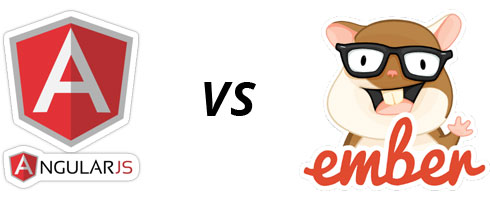Angular vs Ember: Choosing the Ideal JavaScript Framework
With the recent surge in popularity due to the explosion of web apps, many developers are taking a new look at JavaScript frameworks. Much of the interest stems from the speed and simplicity of developing apps, and this trend has shown no sign of letting up. Moreover, with dozens of options to choose from, you should do research and take advantage of the option best suited towards your needs and skillset.
In the following blog post, we’ll compare the pros and cons of two popular JavaScript frameworks, Angular.js and Ember.js.
Angular: Established & Popular
First released in 2009, Angular is an open source web app framework that has become increasingly more popular since coming under the management of Google. Their tagline speaks directly to the priorities of their framework: “AngularJS is what HTML would have been, had it been designed for building web-apps.” All of the attention has benefited Angular, but it is also a source of criticism for the framework: on the one hand, there’s a growing community of contributors, but at the same time some developers feel that Angular doesn’t deserve all of the attention that it receives.
One of the defining features of Angular is its two-way data binding, which many developers praise as a way of simplifying code that would otherwise be complex. For developers building web-apps, this can make both developing and testing apps a fairly simple process. But while this advantage allows users to create dynamic views with lighter code, the framework is criticized for its weaker performance.
Performance with Angular might not be a hindrance when working with smaller apps, but it can become a real concern when working on larger projects. Considering that JavaScript frameworks largely exist to facilitate more speedy interactions, the performance of Angular when it comes to heavier apps is a notable flaw to consider. It can be particularly troublesome when it comes to debugging, which can be a cumbersome process even for experienced developers.
Ember: Powerful & Lightweight
Created in 2011 and with a shorter history than Angular, Ember aims to fill the niche of being a leading framework that isn’t attached to a larger corporation, as Angular is to Google. Instead, Ember depends on its community of developers, and provides a great deal of guidance of how to best use it. In fact, they rally around the tagline “convention over configuration,” which speaks a lot about where they’re coming from.
As opposed to Angular in which developers may be using the framework in very different ways, the aim here was to create a more uniform process. Consequently, one of the benefits of Ember straight off the bat is that it’s much easier to join a team in the middle of a project, since everyone is using the framework as dictated by their community.
In other words, Ember benefits from being open-source and corporate free, while still functioning in an environment where everything is built into the framework itself. This allows developers working on complex apps to breeze through the ordinary tasks that can eat away a lot of time when working with other frameworks. Still, it’s important to note that this comes with a downside as well: developers won’t have as much freedom to build from scratch, if that’s what they’re used to.
Angular vs Ember: What’s Best for You?
The question of which framework is best does not have an objective answer, as it boils down to your personal needs. For a small app or other modest projects, Angular has everything you would need to get it up and running without much of a learning curve. But for a larger project that will involve debugging and other challenges, you may get tied down with mundane tasks and be disappointed by unimpressive speeds.
These larger projects are better suited for Ember, which offers its users a tremendous amount of power for such a lightweight framework. While this isn’t the ideal framework for those who like going about projects their own way, it’s an ideal setup for those who are willing to put up with the learning curve and conforming to an established way of developing. Moreover, it’s conducive to collaboration, since everyone using Ember will be using it in strikingly similar ways.
Ultimately, Angular’s main selling point for many developers is the way that it combines the stability that stems from Google with the benefits of a flexible framework that users can use however they wish. Whereas for Ember, the primary attraction is it being light framework that can handle large projects at fast speeds, all powered by a community of committed developers.
Final Word: Choosing the perfect JavaScript framework requires you to know your strengths and weaknesses, and to what types of projects you’d like to dedicate your talent.


